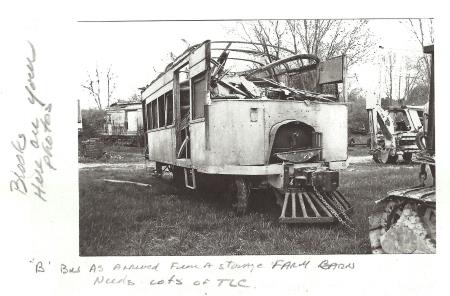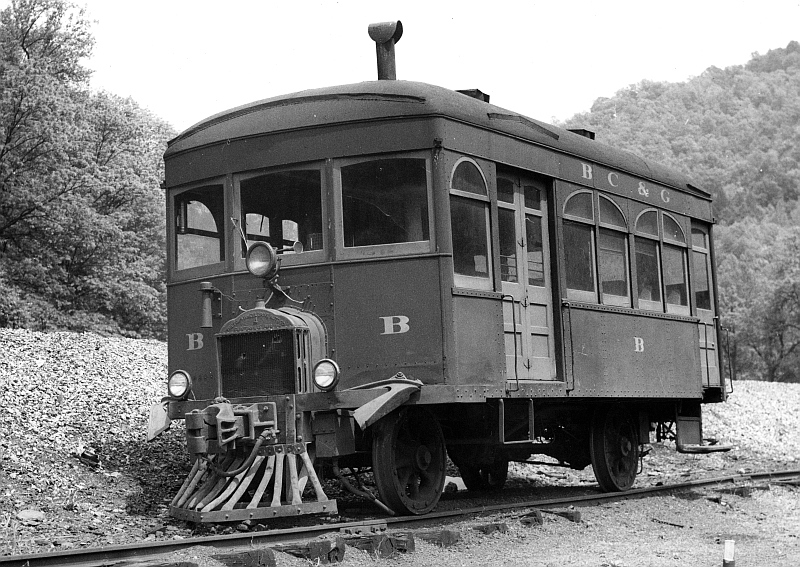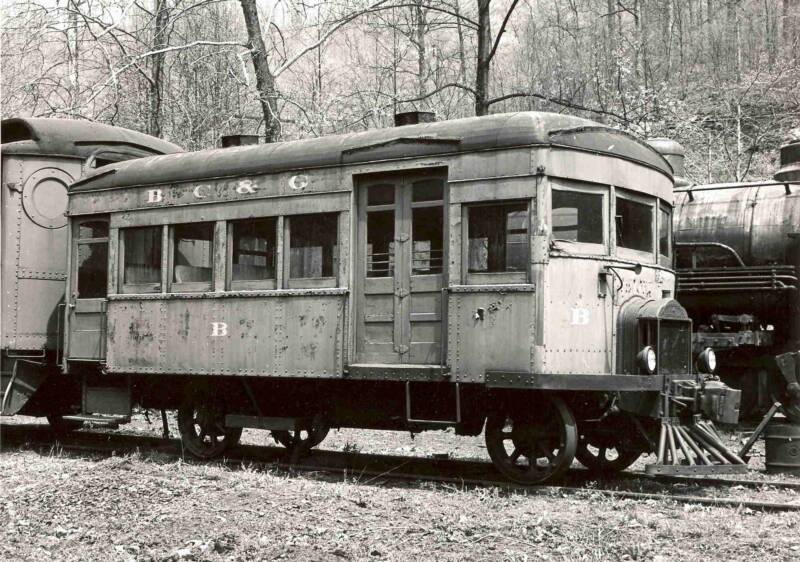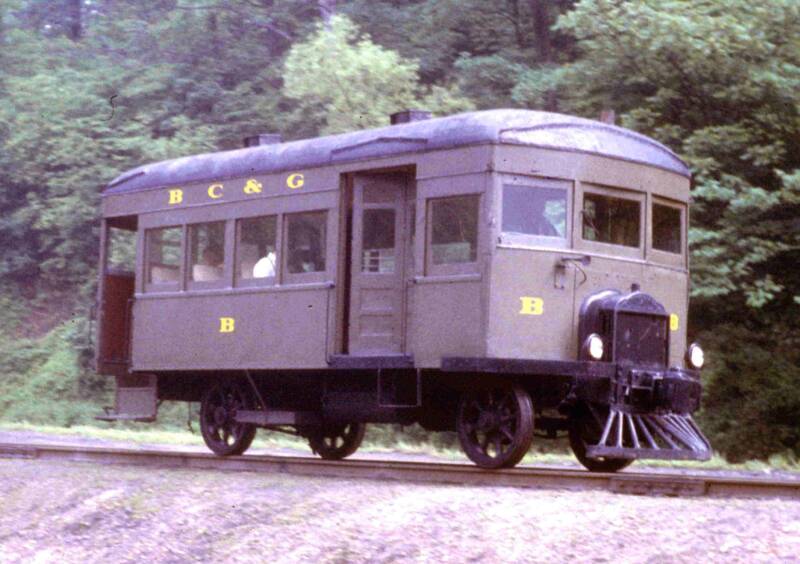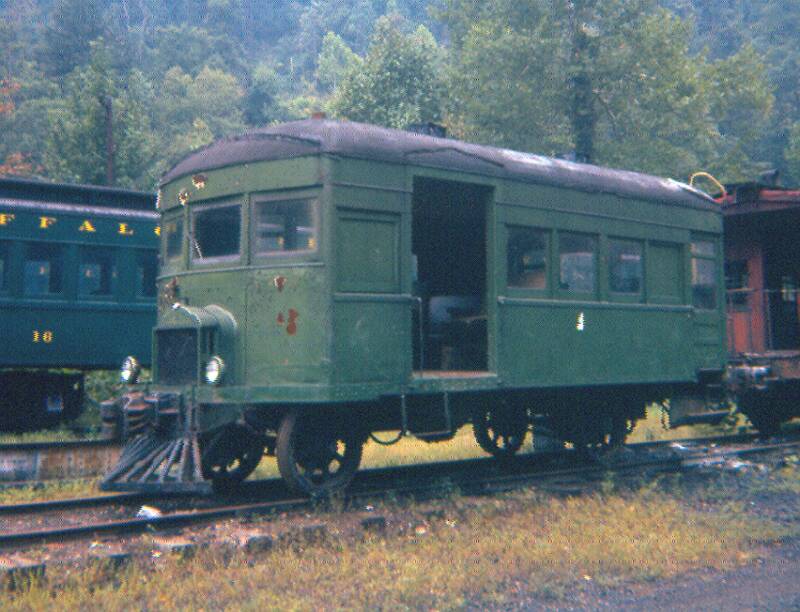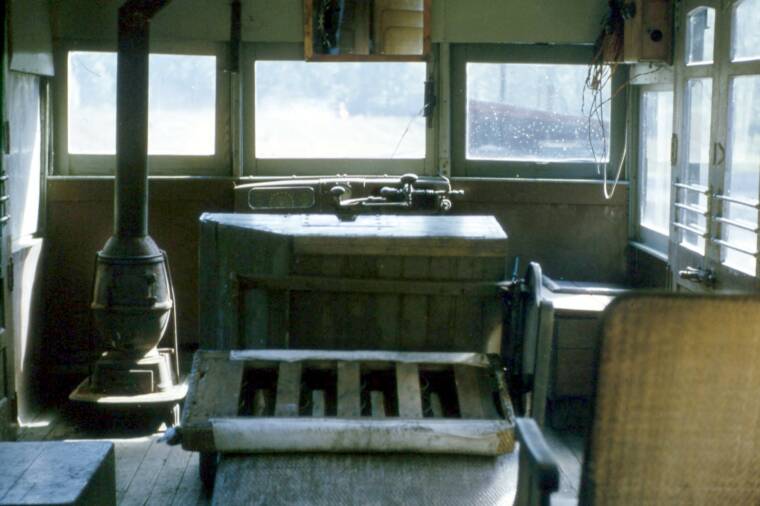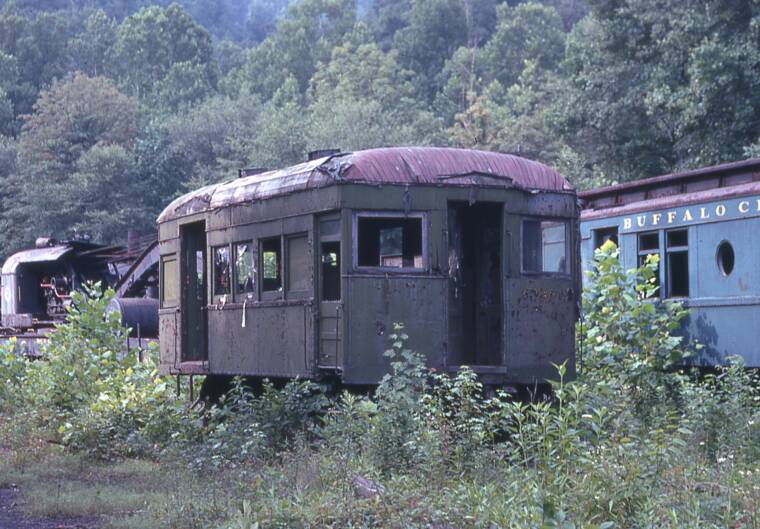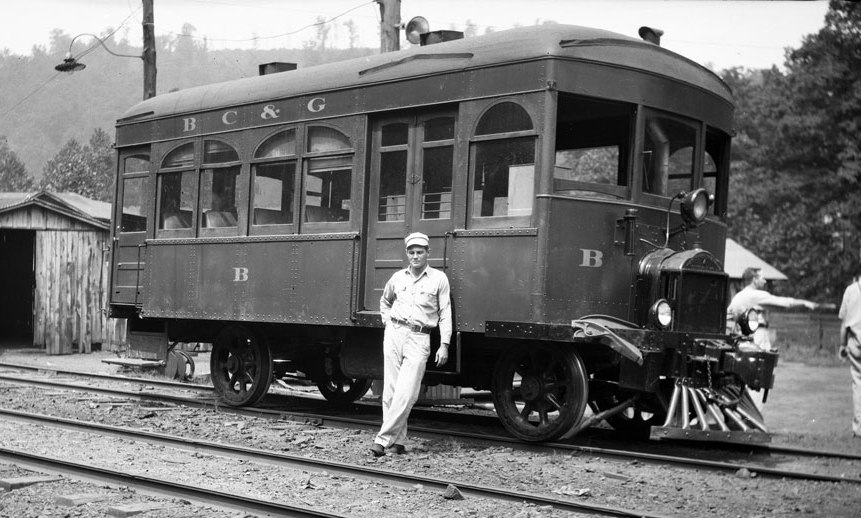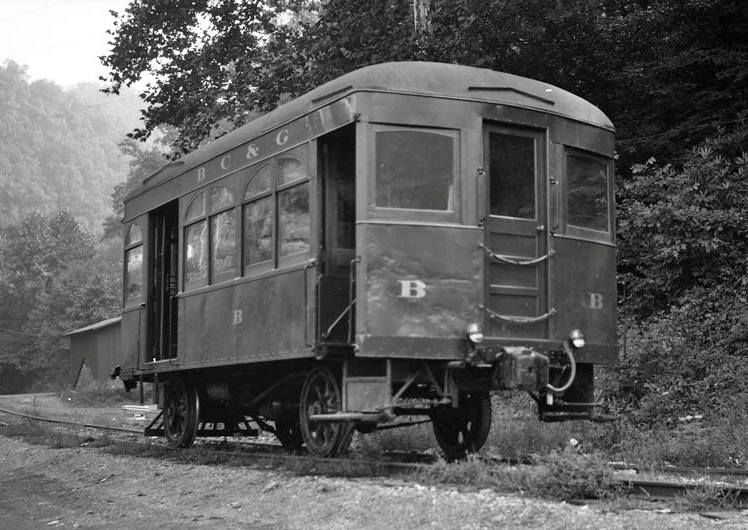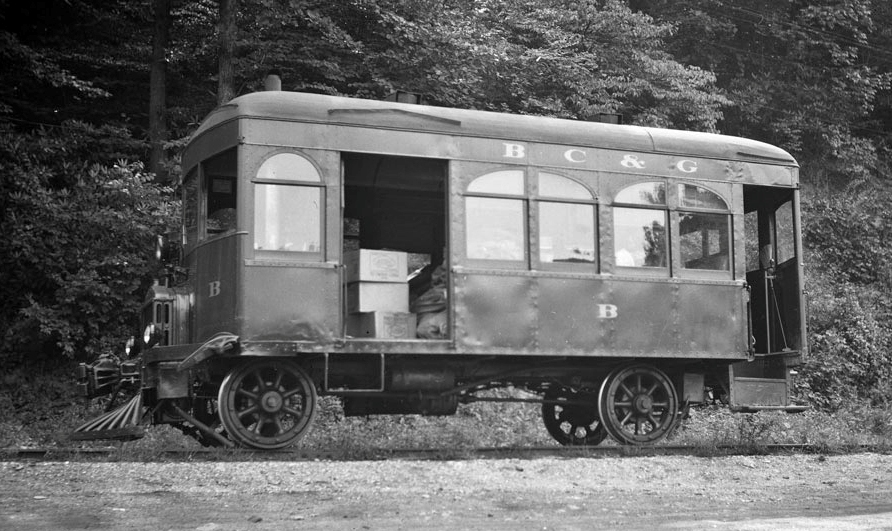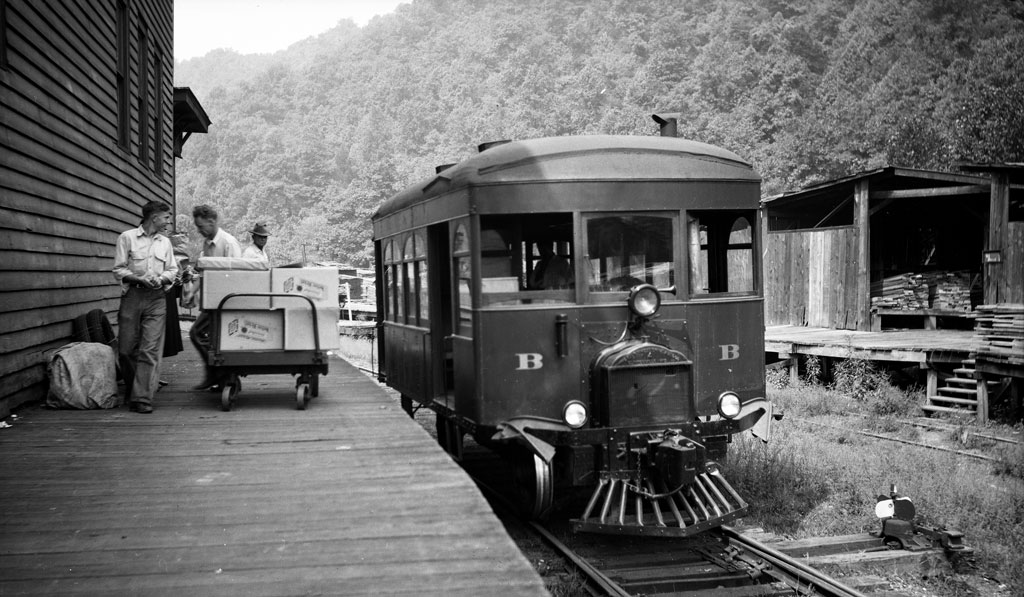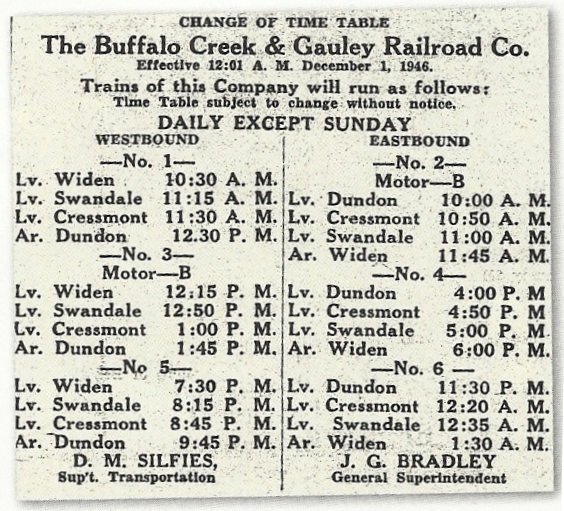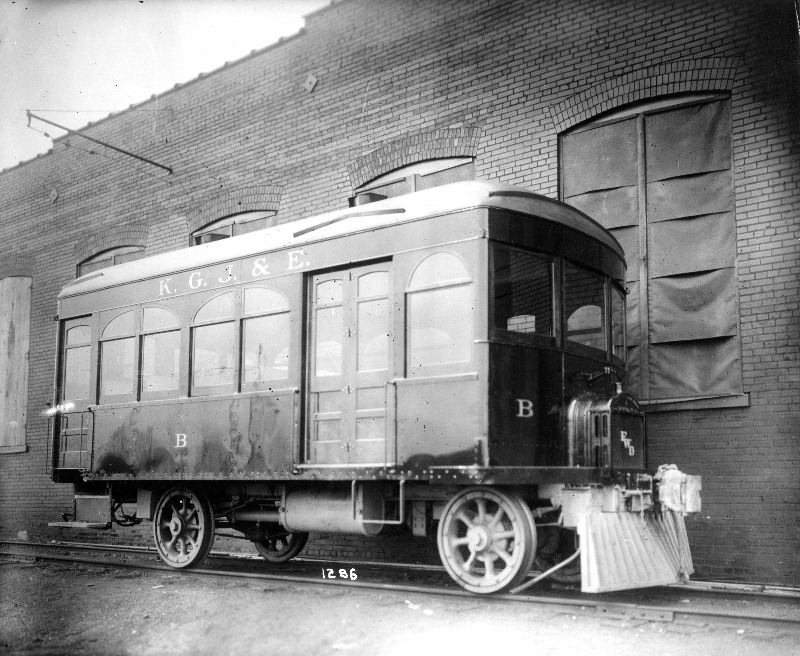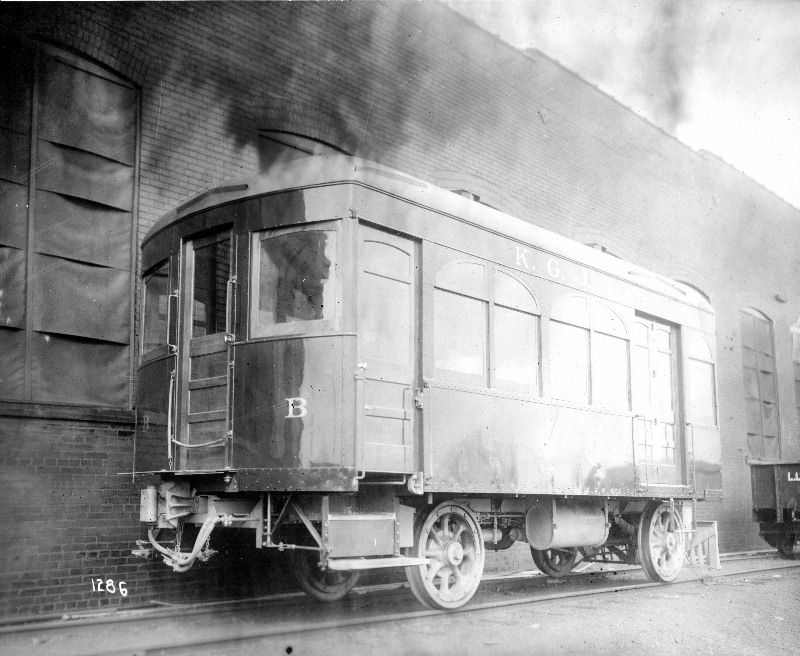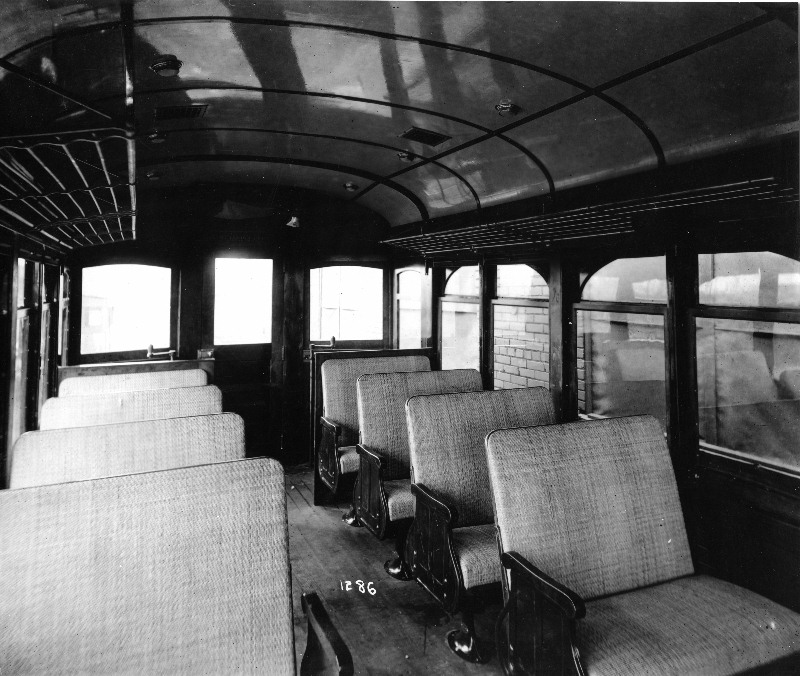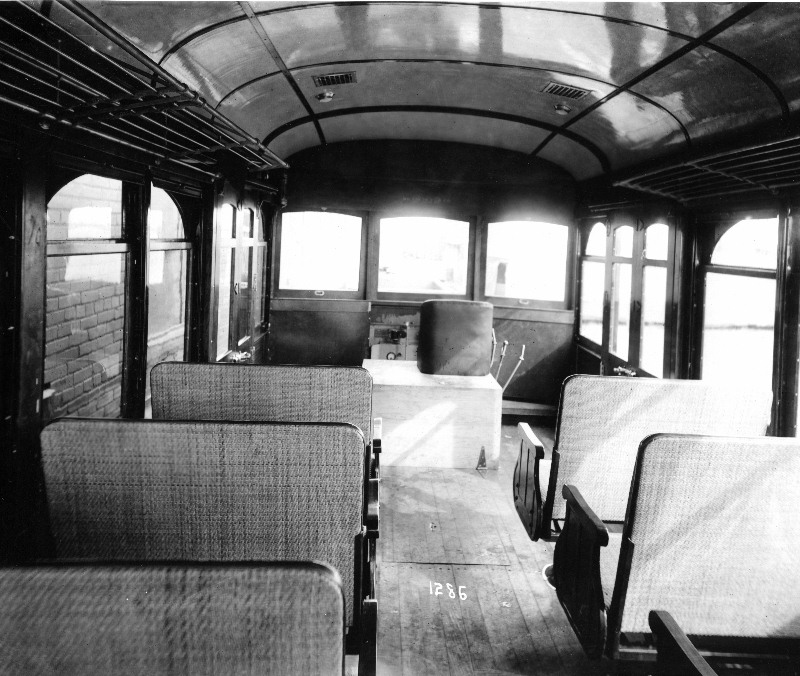BC&G Railbus "B"
The BC&G certainly operated some interesting equipment, but this one may have been the most intersting of all! The chassis for this motorcar was built by FWD, predecessor to today's big truck manufacturer. According to James Greene, the bus was one of 16 similar units built between 1920-1922. Bodies were built by both Brill and St. Louis Car Co., the latter being the builder of the BC&G's bus body (No. 1286). Greene says the unit was purchased from the Kanawha, Glen Valley & Jean RR, the original owner. See bottom of page for builder's photos.
It was used primarily as J.G. Bradley's personal car. It had a capacity of 12 passengers and was fitted with a four-cylinder, 36 hp engine, and a three-speed gearbox that drove the rear axle only.
This first group of photos shows its as-built appearance which it retained at least through 1948. Apparently this car became known as Motor "B" because of it's FWD Model "B" designation. Later, in 1941 when the larger Mack AC bus was obtained, it became Motor "A", hence the "B" came before the "A".
I find the story of events in 1933 described above a little hard to believe. I would think that leaving to turnout thrown to the railbus shed (to the east of Dundon) would have been a highly unlikely mistake for a crew member. If "a night train" running at speed on the main actually did run that switch and enter the shed, it seems to me it would have destroyed the railcar...and the shed for that matter...and possibly derailed the engine!
Interestingly, according to Bobby Caruthers in 1993, track ran through the Dundon engine house and there was a sycamore tree at the end of the track that "the couplers of the locomotives could touch". Is it possible that the Motor "B" was in the Dundon engine house, not the "motorcar house" and was unintentionally pushed into the sycamore tree by a locomotive entering the engine house? Also, it should be noted that one of the tracks that entered the engine house could only accommodate the railbusses as it the roof was too low at that point for locomotives. Perhaps for some reason Motor 'B' was in the larger side of the engine house that night. Pure speculation, but plausible.
Brooks Stover
ADDITIONAL RESOURCES
An excellent set of drawings of Motor "B" appeared in the May/June 2000 issue of NARROW GAUGE GAZETTE magazine. Included were several photos and complete scale drawings of the bus including the interior and chassis layouts. This article contains all the information needed to build a very accurate model of Motor "B".
A similar article appeared in the December 1997 NMRA BULLETIN. This article was written by Pete Moffat, MMR, and included photos and drawings of the bus.
For more info, see REFERENCES / Magazines
Photographer and date unknown
From Richard Manning collection - date unknown
ARCHED WINDOW CONFIGURATION
SQUARE WINDOW CONFIGURATION
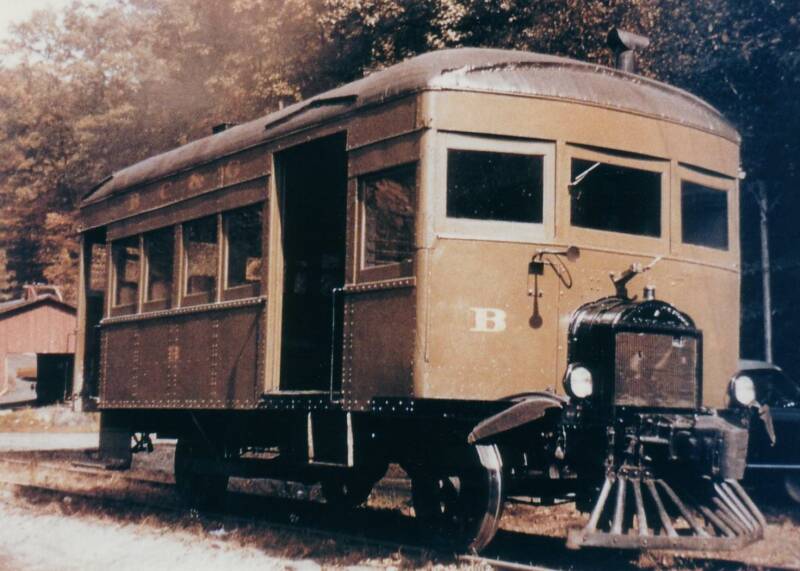
Color photos of Motor "B" are scarce. This one was posted on the Sigman website. The photos I've seen usually show it to be this olive drab color while Motor "A" sometimes is olive drab but sometimes appears a brighter green.
This is the only photograph I've ever seen that shows Motor "B" with passengers actually on board! It's not clear whether the bus was actually in motion at the time of the picture was taken, but it is certainly not stored in the Dundon yard where most later photos were taken.
David Marquis photo - circa 1958
MOTOR "B" BREAKDOWN as told by Cody Burdette
Cody Burdette has passed along this great story about an incident involving Motor 'B', Mr. Bradley, and Cody's dad:
"One time during the strike in the 1950's Mr. Bradley was on Motor 'B' on his way to Widen when it broke down.just afte it had passed Swandale. The drive walked back to Swandale frantic saying Mr. Bradley was so mad he had gottn off the bus and was walking towards Widen. The driver was afraid someone might shoot him. Dad was a pretty good mechanic so they aske dhim to walk back up the track to see if he could fix the Motor 'B'. He got it going in just a little while and the driver sped away to pick up Mr. Bradley. Dad told me later that the points weren't breaking so he adjusted them and the problem was solved. The drive caught up with Mr. Bradley and all ended well."
Here's one last color photo of Bus "B" taken by railfan John Brown. The bus appears to be yet a different shade of green than the earlier photos and there is no lettering visible. John points out that some of the color variation might just be differences in film. BC&G #16, looking to be in good shape, is visible in the background.
John Brown photo circa 1963
This is the only photo I'm aware of, certainly the only color photo, of the interior of Motor "B". It was taken on 10-2-58 by John Phillips. It appears that the cushion of the driver's seat is laying upside down on the pedestal. Notice the unusual controls on the top of the engine cover and the pot-bellied stove to the left.
John Phillips photo dated 10-2-58
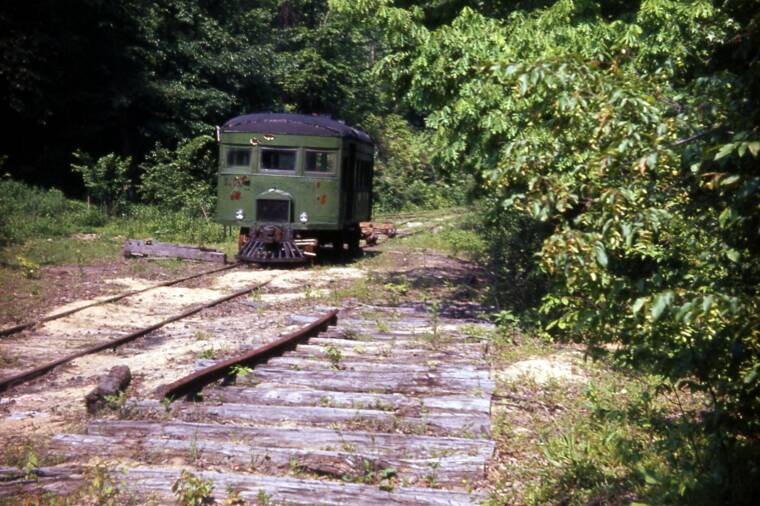
"What are you doing way out here?" This photo shows Motor "B" somewhere out in the woods. From the looks of the log ties and very light rail, and lack of road bed, this looks suspiciously like the Lilly Fork. Why the bus was here and seemingly abandoned is not clear.
John Phillips photo
May 31, 1963
In July of 1969, Richard Bradley visited the BC&G and took these three photos of Motor B. Of particular interest is the detail in the photo to the left of the radiator tank. The significance of the digit "4" in the center of the tank is not clear.
3 photos by Richard Bradley 7-69
The photo to the right, provided by Ron Jedlicka, shows Motor "B" as she looks today. The bus is owned by the Ohio Vintage Coal Museum and is currently undergoing restoration. At the present time the bus is covered to protect it from the elements and the museum is in the process of collected all the needed parts.
The photos to the right and below show a later version with different window treatment. Unfortunately, the windows have lost their wonderful arched shape in the translation.
According to page 18 of Warden's BC&G book, "In 1933, a BC&G employee left the switch open to the motor car house (see Railbus Sheds). The night train ran through the switch and drove the railbus into a sycamore tree. Bradley insisted on rebuilding his car; the rebuild altered the original roofline somewhat but otherwise preserved the car." The Warden account further states that "sometime after 1948, the car lost it's graceful arched windows, giving way to the rectangular windows..
The 1933 incident did not affect the arch windows as the James Greene photos attest, and the Warden account that the removal of the arched windows occurred after 1948 is also confirmed by the Greene pictures..
In July of 1948, James Green had the opportunity to ride Motor "B" from Dundon to Widen and took the four excellent photos below. Together they show all four sides of the bus. Click on each image for a larger view. Four photos by James Greene
AN INTERESTING SCHEDULING NOTE: The timetable that James got from the BC&G office (right - click to enlarge) on his visit in the summer of 1948 shown as effective December 1, 1946, showed that Motor "B" was the scheduled motive power for trains #2 and #3. This confirming that Motor "B" was not just for J.G. Bradley's use, at least at this time. Whether the remaining trains #1, #4, #5 and #6 were Motor "A" runs or scheduled coal trains is not known. As stated elsewhere on this site, it is generally believed that coal trains ran as extras and so wouldn't have appeared on a timetable. However, the fact that the coal trains at this time were mixed trains with a coach (for passenger service) as caboose may have resulted in them being shown on the time schedule.
Cody Burdette believes that two coal trains ran each day at this time and that coal trains originated in Widen, not Dundon as in the later years. This would suggest that trains #1, #4, #5 and #6 on this schedule might have been coal trains. But then where are the Motor "A" runs?
BUILDER'S PHOTOS
Ron Jedlicka provided these builders photos from the St. Louis Car Company. They came from his collection and are from the Washington University archives. Notice the spiffy seats and overhead storage racks.
A curious inconsistency is that the abbreviation on the letter board does not match the name of the railroad thought to be the original owner, Kanawha, Glen Valley & Jean. More study is required.
